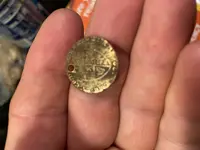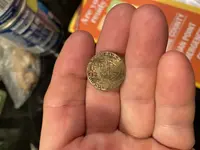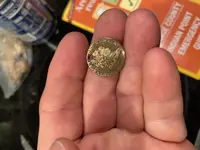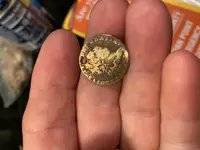There are dozens of variations on these brass spade guinea/half guinea tokens. They’re Victorian or later and generally
not before about 1860. The use of the older George III guinea as the base design was just a piece of nostalgia coupled with the need to ensure that they weren't copying a coin that was still in circulation. Here are a just a few of the many examples, which are common finds over here:
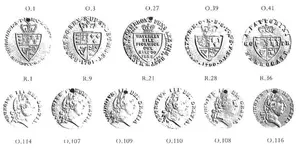
Yours very obviously has ‘B.I.R.M’ as the final part of the legend, which you would never find on an authentic coin.
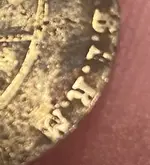
Hawkins lists the following variants with the Birmingham abbreviation (and more may have arisen since his 1963 publication):
GUINEA SIZE:
N.C.R.ET.CO.DG.L.T.REX.F.D.B.I.R.M / . 1790.
B.BROS.REX.F.D.CLXX.HOCKLEY.B.I.R.M I .1790.
CJH.REX.FID.CLX. LOZELLS.B.I.R.M / .1770.
C.W.B.ET.CO.D G. I.REX F.D.B.I.R.M / .1790. (legend interrupted by cross and crown)
•J.G.REX.F.D.M.C.M.D.S.T.M.S.B.I.R.M. / 1790
HALF GUINEA SIZE:
C.H.A.R.L.E.S.P.E.V.E.R.E.L.L.E.M.A.K.E.R.B.I.R.M I .1788.
N.C.R.ET.CO.DG.L.T.REX.F.D.B.I.R.M / .1790.
B.BROS.REX.F.D.CLXX.HOCKLEY.B.I.R.M I .1790.
C.W.B.ET.CO.DG.I.T.REX.F.D.B.I.R.M / .1790.
W.C.B.ET.CO.DG.I T.REX.FD.B.I.R.M / .1790.
.W.C.B.ET.CO.DG.I T.REX.FD.B.I.R.M. / 1790
